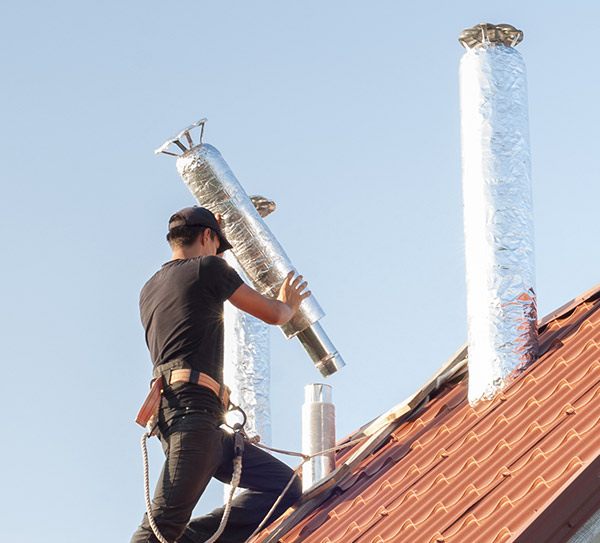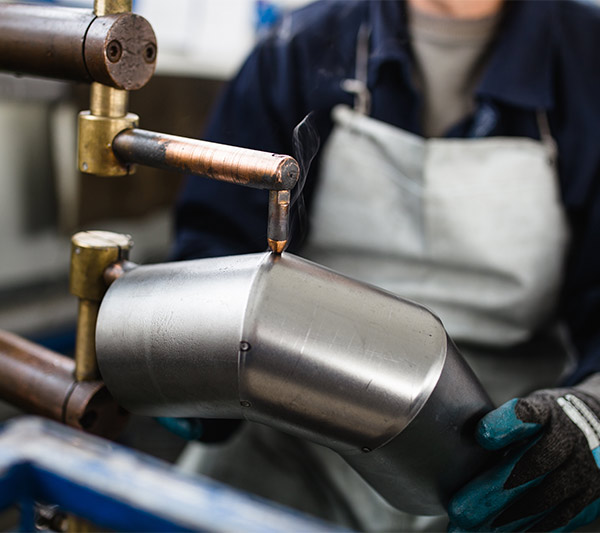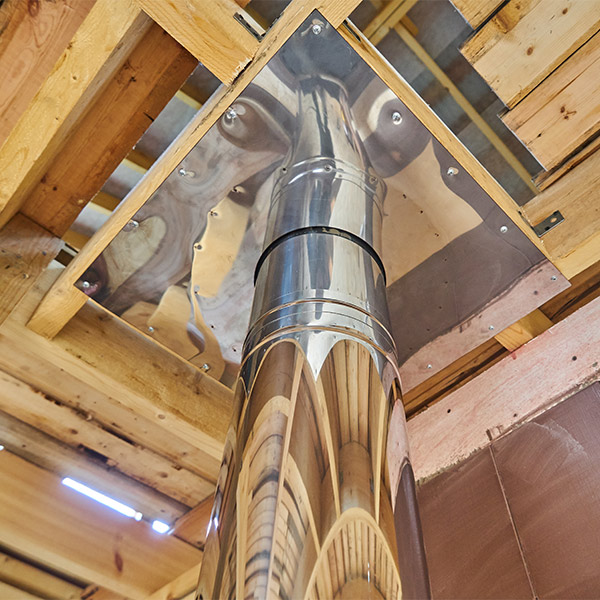Find a local chimney building and repair specialist
Chimney stacks poking out from rooftops is one of those quintessentially British sights. If yours is falling into disrepair, or if you’d like to give your chimney a new lease of life, find a specialist tradesperson to sweep away your fireplace frets.
Post your job for free. Read reviews, get quotes, and see tips on hiring the right person.
Browse Chimney Building / Repair specialists
Take a look at our Chimney Building / Repair specialists profiles, read reviews and request quotes directly.
Chimney building repair specialists near me | Rated People
Chimneys might be a sought-after design feature, but they also perform a crucial role whenever you use your gas, wood-burning or open fire. Chimneys are engineered to allow just the right flow of air to get rid of dirty emissions, while maintaining as much heat in your home as possible.

In fact, the construction of chimneys is governed by strict building regulations – so it pays to use a professional when you’re having work done. As well as creating a chimney breast and fitting a pot or terminal (if necessary), building a new chimney involves assembling the flue lining, flue pipe (where required), connector and the smoke chamber. Doing this in the correct way makes sure a draft is created, which pulls smoke out of your room and evacuates it safely.
The complexity of repairing a chimney depends on the fault. The good news is that most problems can be resolved. Flues can be relined or repaired to address issues with leaking smoke or emissions. Or, if you’re having damp problems, these can be fixed too – either with brickwork remediation or by replacing lead flashings. And even more serious structural problems such as a leaning chimney breast can be sorted – though this may be a big job, with scaffolding required.
Cost of chimney building and repair
The labour and material costs to build a chimney will depend on the complexity of what you’re trying to achieve. And, design features aside, that will usually be steered by the type of fire you have (or want). Expect the construction of even the most modest chimney to start at around £1,000 and go up from there.

When it comes to flue costs, these vary according to the type of fuel you’re using. Wood-burning stoves can use prefabricated stainless-steel flues, which are the cheapest option. Gas fires only need a single-skin flue, but solid fuel fires require an insulated twin-wall flue – this is to stop smoke from condensing inside. A typical twin-wall stainless-steel flue will cost anywhere from £1,250-£1,500. Ceramic flues (as well as those made from other resilient materials like pumice stone) are also available, but these will cost significantly more than the steel option.
Chimney repair costs can vary drastically according to the job. You’ll usually be quoted according to the time required to remedy your exact problem. Depending on where you are, that rate will be between £150-£300.
How to repair a chimney
- Problems with the flue. Your flue has to be airtight for safety, to make sure carbon monoxide is sent out of your home. The flue can be tested using a smoke pellet, or your professional may recommend a specialist survey using a video camera. The solution to most flue-related problems is having a new liner installed, which an experienced tradesperson will carry out in accordance with building regulations.
- Leaking chimney stack. Stains on ceilings or walls near your chimney breast are the telltale signs of a leak. Often this is the result of flashings (strips which cover the area where roof tiles meet the chimney brickwork) either coming loose or cracking and allowing rainwater in. Replacing flashings is a relatively straightforward job, and lead is typically selected as it is both durable and weatherproof. New flashings are usually installed in a stepped pattern for waterproofing.
- Cracked brickwork. Whether internally or externally, cracked brickwork can present problems for your chimney and will need to be resolved. External cracks can create structural damage, while internal cracks could allow dangerous emissions to escape into your home. Replacing damaged brickwork requires any defective sections to be removed and replaced, or for more minor repairs areas can simply be repointed. In extreme cases, the chimney stack may need to be taken down and rebuilt.
- Unstable chimney stacks. If chimneys show evidence of leaning, they can be reinforced with steel straps or stay bars. Where leaning becomes more exaggerated, it may be necessary to rebuild the chimney – either partially or entirely.
Building a chimney – the key components
- Chimney breast. Usually a brick or blockwork column either built inside a property or on the outside of an external wall, the chimney breast directs smoke, gas and other by-products out of your home. Some may have a dedicated flue pipe inside, or simply be lined with a flue liner. A chimney breast will terminate at the roof of your home and is usually finished by a pot or cowl.
- Flue liner. The flue liner is made from a fire-resistant material – typically specialist concrete, clay, or metal. Flue liners help to protect the brickwork of a chimney from combustion gases, and also improve air flow. There are two types of flue liner – class 1, for solid fuel fires, and class 2, for gas fires.
- Flue pipe. The flue pipe allows smoke and other emissions to travel out of your home, away from the fire. Not every chimney will have (or needs) a flue pipe, but where they are present, they need to be engineered to ensure they create enough draught.
- Flue connector. This connects the fireplace to the flue. Provided the angle it is installed at doesn’t exceed 45°, your chimney sweep can still clean your fireplace.
- Hearth. This is the surround that helps keep your fire where it’s supposed to be and prevents heat from damaging nearby elements, like carpets and walls.
- Smoke shelf. A horizontal surface that helps to prevent downdraughts of smoke from entering your home.
The qualifications your tradesperson needs
A general builder will be able to construct a chimney, while a roofing expert can repair elements like lead flashings. These tradespeople don’t necessarily need any specific qualification to do this work.
But to install a fireplace your tradesperson may require additional accreditation, depending on the type of fuel you’ll be using. For gas fires, your professional must be Gas Safe registered. For solid fuel fires, they should be HETAS (the solid fuel fire accreditation body) registered.
Planning permission for chimney construction and repair
You won’t usually need planning permission to install a chimney. To quote the planning portal: “Planning permission is not required provided that the height of the chimney, flue or soil and vent pipe is not more than 1 metre above the highest part of the roof.”
There may be additional requirements if you live certain areas, such as a national park or a neighbourhood featuring listed buildings.
Insurance your tradesperson needs
Make sure your tradesperson holds public liability insurance. This helps to protect you and your tradesperson from any damage to your property.
Questions you should ask your tradesperson
- Would your professional recommend installing a flue pipe?
- If a flue pipe is not necessary, would they recommend a flue liner?
- What techniques would they recommend for a smoke or gas leak, or a damp issue?
- Do they hold Gas Safe or HETAS accreditation?
- Can they offer a warranty on their work?
Get our app for homeowners
- Send messages and get notifications from tradespeople
- Add photos to get more accurate quotes
- View tradespeople's profiles
